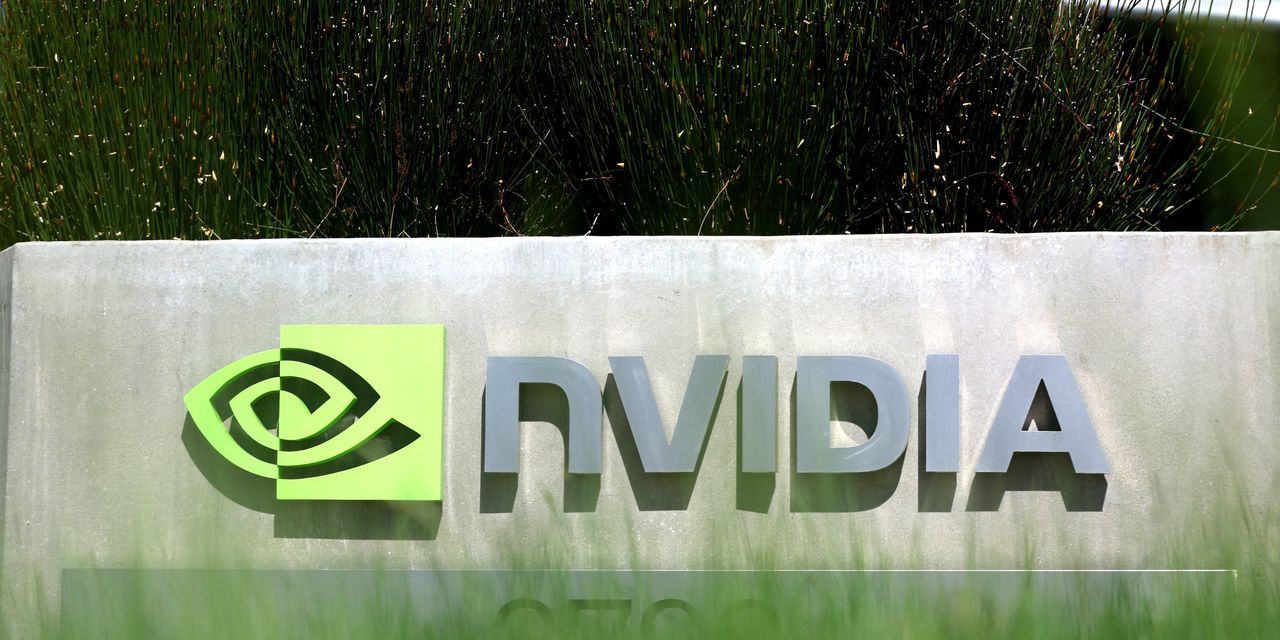Nvidia Corp. stunned Wall Street with Wednesday’s jaw-dropping forecast of $16 billion in revenue for the current quarter, and that may not even be the company’s top-line peak, as its decades of work in accelerated computing pay off in a big way.
The company blew expectations out of the water with its latest results, thanks to a frenzy around artificial intelligence, which drove surging demand for Nvidia’s
NVDA,
data-center chips that help power artificial-intelligence applications. But what really pleased Wall Street was Nvidia’s forecast for $16 billion in revenue at the midpoint in the current quarter, a staggering projection that indicates the company is benefiting from a wave that shows no signs of easing.
Quarterly revenue of $16 billion would be almost double what had been the company’s top-line record prior to Wednesday’s report, and more astounding is that Nvidia might have the potential to top the $16 billion mark down the line.
When asked if her guidance for revenue represented a peak for Nvidia, Chief Financial Officer Colette Kress would only say that the company is seeing “tremendous demand” and that it has visibility into very strong orders into 2024.
“Going into fiscal 2024, we already have demand visibility … that takes us into the new calendar year as well,” Kress told MarketWatch in an interview. “We have tremendous demand and we will continue to ramp our supply into the next year.”
To put the enormity of Nvidia’s forecast into perspective, total revenue for the full year that ended this January was $27 billion, and the company’s outlook implies it could rack up more than half that in the current quarter alone.
As companies get serious about using AI to make themselves more efficient or to augment their own product offerings, they are now rearchitecting their data centers with accelerated computing to process the massive amounts of data needed for training large language models that make up AI applications. Accelerated computing also helps with inference, which deduces answers based on existing data.
“We knew this day at some point would come, when accelerated computing and AI would be very very important to all types of enterprises, and that day has come,” Kress said. When asked if the company was at all nervous about looming competition from Intel Corp.
INTC,
Advanced Micro Devices Inc.
AMD,
Qualcomm Inc.
QCOM,
and a bevy of chip startups, Kress indicated that she was not.
“When we look at history and how long it has taken us to get to this point and the complexity that it took to really have an end-to-end data-center solution for AI, it is decades for us,” she said. “Decades of work, decades in terms of architecture and decades in terms of complexity.”
In other words: “It’s just not something that anyone can replicate very easily.”
Also read: Nvidia is making serious money from AI, don’t count on the rest of tech to follow suit.
Still, Wall Street is trying to get a sense of how long this growth can be sustainable, since at some point companies will have all the chips they need to revamp and upgrade their data centers, and hyperscaler customers like Meta Platforms Inc.
META,
and cloud services like Microsoft Corp.’s
MSFT,
Azure, Amazon. com Inc.’s
AMZN,
AWS and Alphabet’s
GOOGL,
GOOG,
Google Cloud will at some point stop spending.
There’s roughly a trillion dollars’ worth of data centers and perhaps a quarter of a trillion dollars in capital spending each year, Chief Executive Jensen Huang said on the earnings call.
“You’re seeing that data centers around the world are taking that capital spend and focusing it on the two most important trends of computing today: accelerated computing and generative AI,” he said. “And so I think…this is not a near-term thing. This is a long-term industry transition, and we’re seeing these two platform shifts happening at the same time.”
With Nvidia shares already up an eye-popping 222% so far this year and set to move higher in Thursday’s session, investors will be banking on those comments for some time to come.
Read the full article here



